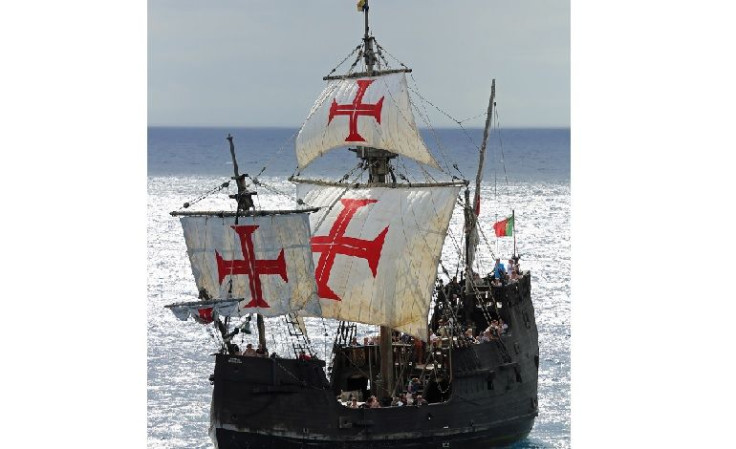
If you paid attention to your History classes, you know that when Christopher Columbus discovered the Americas in 1492, he had an expedition of a number of men spread throughout three ships, the Niña, the Pinta and the Santa María. This last one was the biggest of the three, and although it was the slowest, it cruised the Atlantic very well. So after a few months in the area, but established in La Hispaniola (now Dominican Republic and Haiti), Columbus and his men were celebrating Christmas, when he ordered the crew to sail to Cuba late into the night.
One by one, everyone kept falling asleep but a cabin boy who was the one left steering the ship, which caused it to run aground off the present-day site of Cap-Haïtien, Haiti. Realizing the ship was beyond repair, Columbus ordered his men to strip the timbers from it, which were used to build a fort called La Navidad (Christmas), reminiscing of the date when the wreckage happened. The fort was eventually burned down. Now, a world-renowned explorer, Barry Clifford, believes he’s found the Santa María’s remains with funds from the History Channel.
The ship was found in the exact area where Columbus said the Santa Maria ran aground more than 500 years ago, Clifford said. The wreck is stuck on a reef off Haiti's northern coast, 10 to 15 feet beneath the water's surface. “All the geographical, underwater topography and archeological evidence strongly suggests that this wreck is Columbus’ famous flagship, the Santa Maria,” Clifford told The Independent newspaper. "The Haitian government has been extremely helpful – and we now need to continue working with them to carry out a detailed archeological excavation of the wreck."
His team found and photographed the wreck 10 years ago, but did not realize what it was until recently, the paper reported. Clifford plans to go back to Haiti next month to meet with authorities and decide what steps to take next. According to The Independent, Clifford came to the conclusion of the Santa Maria's possible location by combining two separate historical sources. After archeologists announced new details suggesting the location of Columbus' fort in Haiti in 2003, Clifford used information in the explorer's diary to narrow down a possible location for the Santa Maria's sinking.
Archeologists will have to excavate and examine the ship found off Haiti in order to determine whether it is in fact the Santa Maria. Most of the ship is in shape and will be possible to excavate with the help of the Haitian government, Clifford said. “I am confident that a full excavation of the wreck will yield the first ever detailed marine archeological evidence of Columbus’ discovery of America," he added. If the wreckage is the Santa María, it would go down as one of the most significant underwater archeological discoveries ever. "It is the Mount Everest of shipwrecks for me," Clifford told CNN.
As for what to do with the wreckage if it turns out to be Columbus’ ship, Clifford says that he’d use it to further Haiti’s tourism. "Ideally, if excavations go well and depending on the state of preservation of any buried timber, it may ultimately be possible to lift any surviving remains of the vessel, fully conserve them and then put them on permanent public exhibition in a museum in Haiti. I believe that, treated in this way, the wreck has the potential to play a major role in helping to further develop Haiti's tourism industry in the future." The History Channel has been filming the operation and plans to broadcast a special on the effort.
© 2025 Latin Times. All rights reserved. Do not reproduce without permission.





